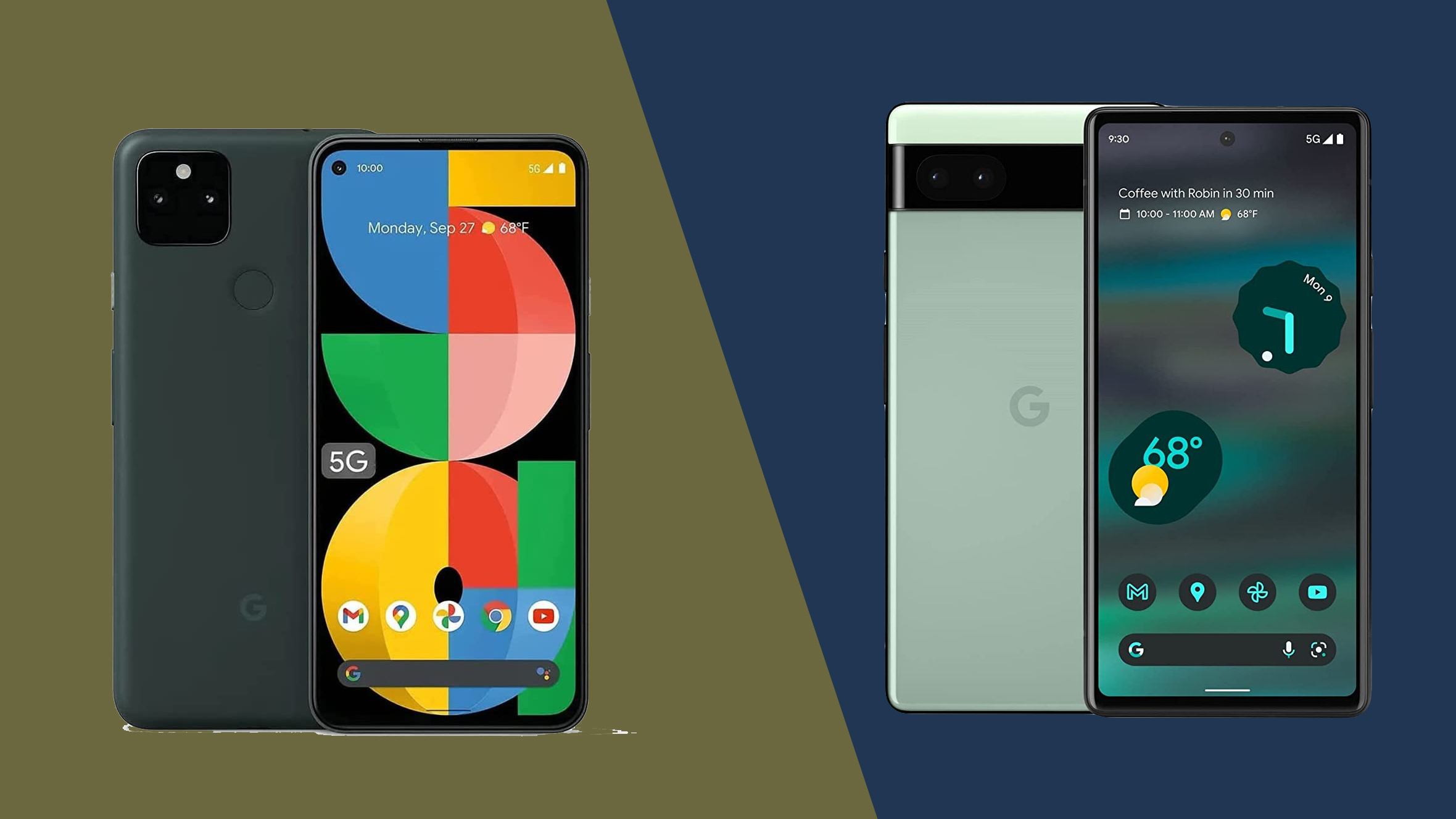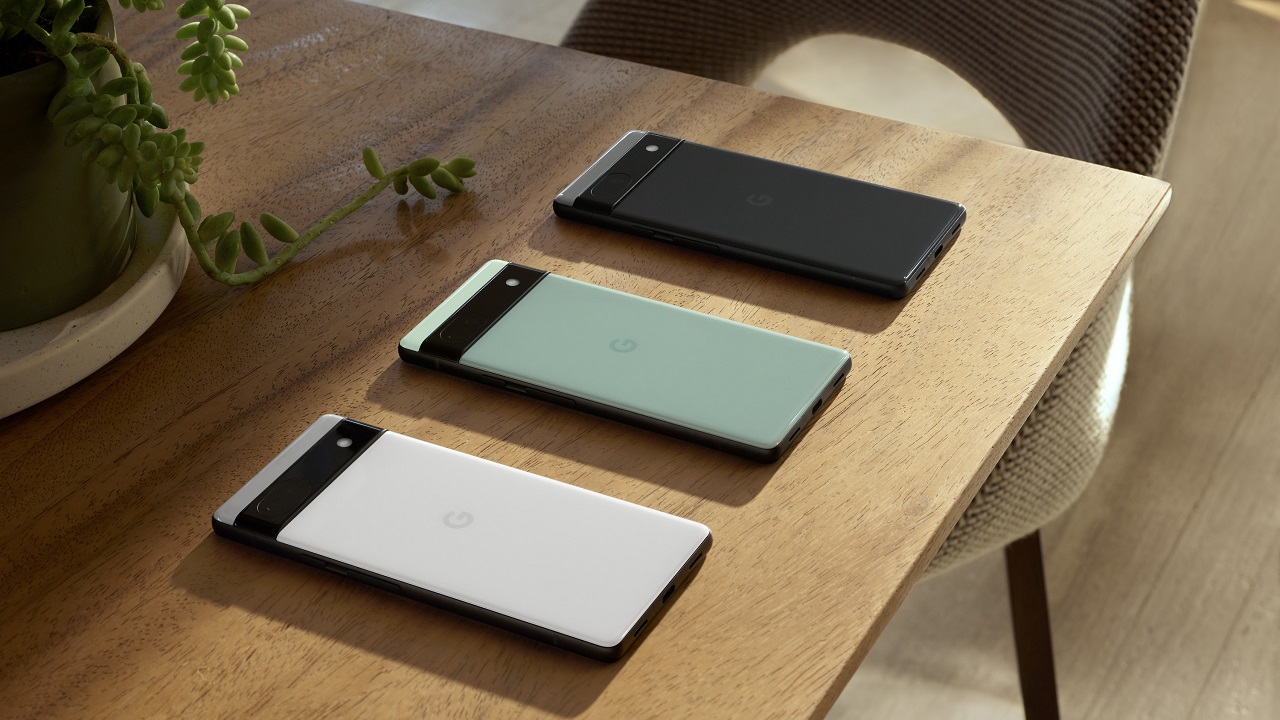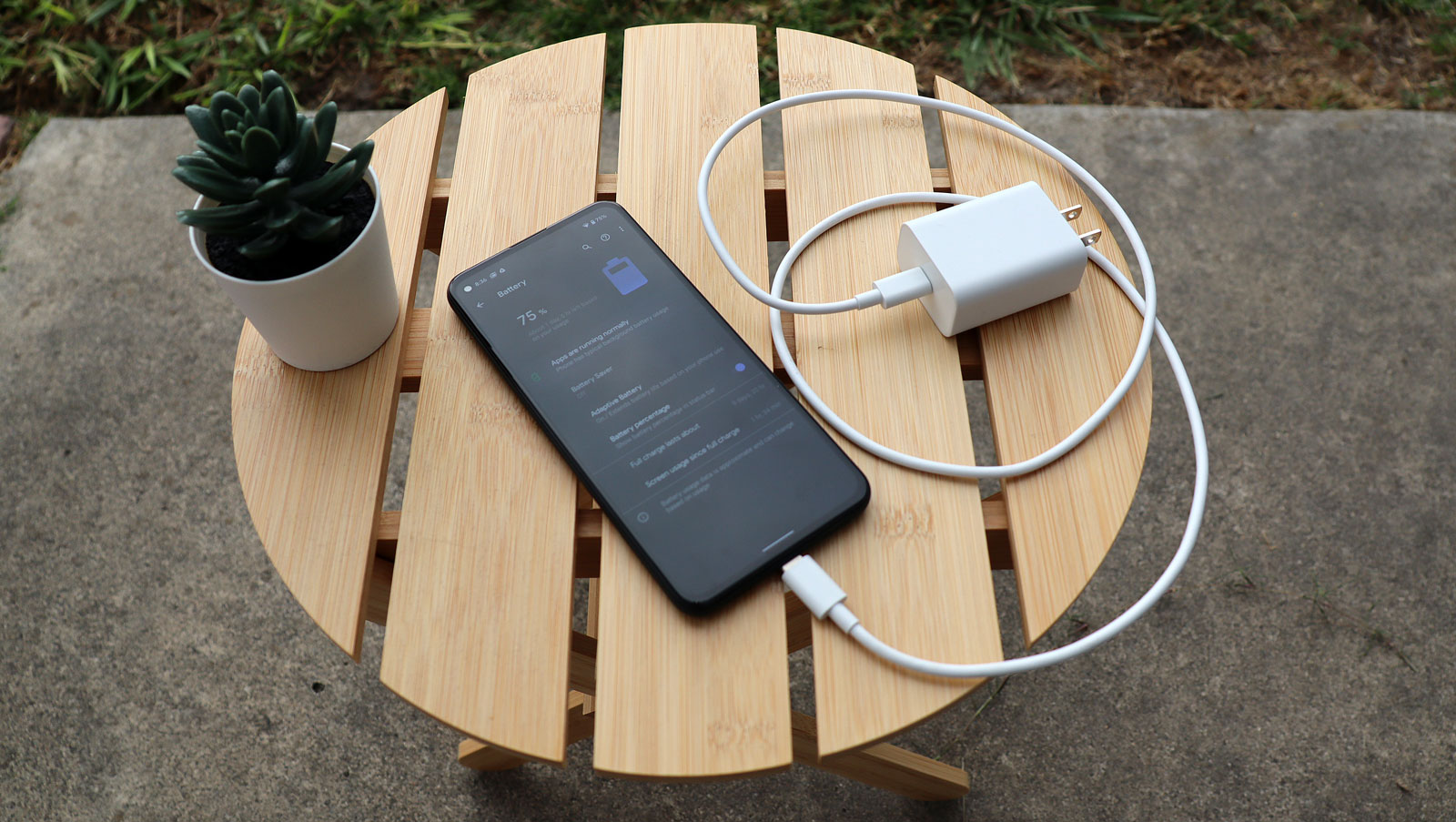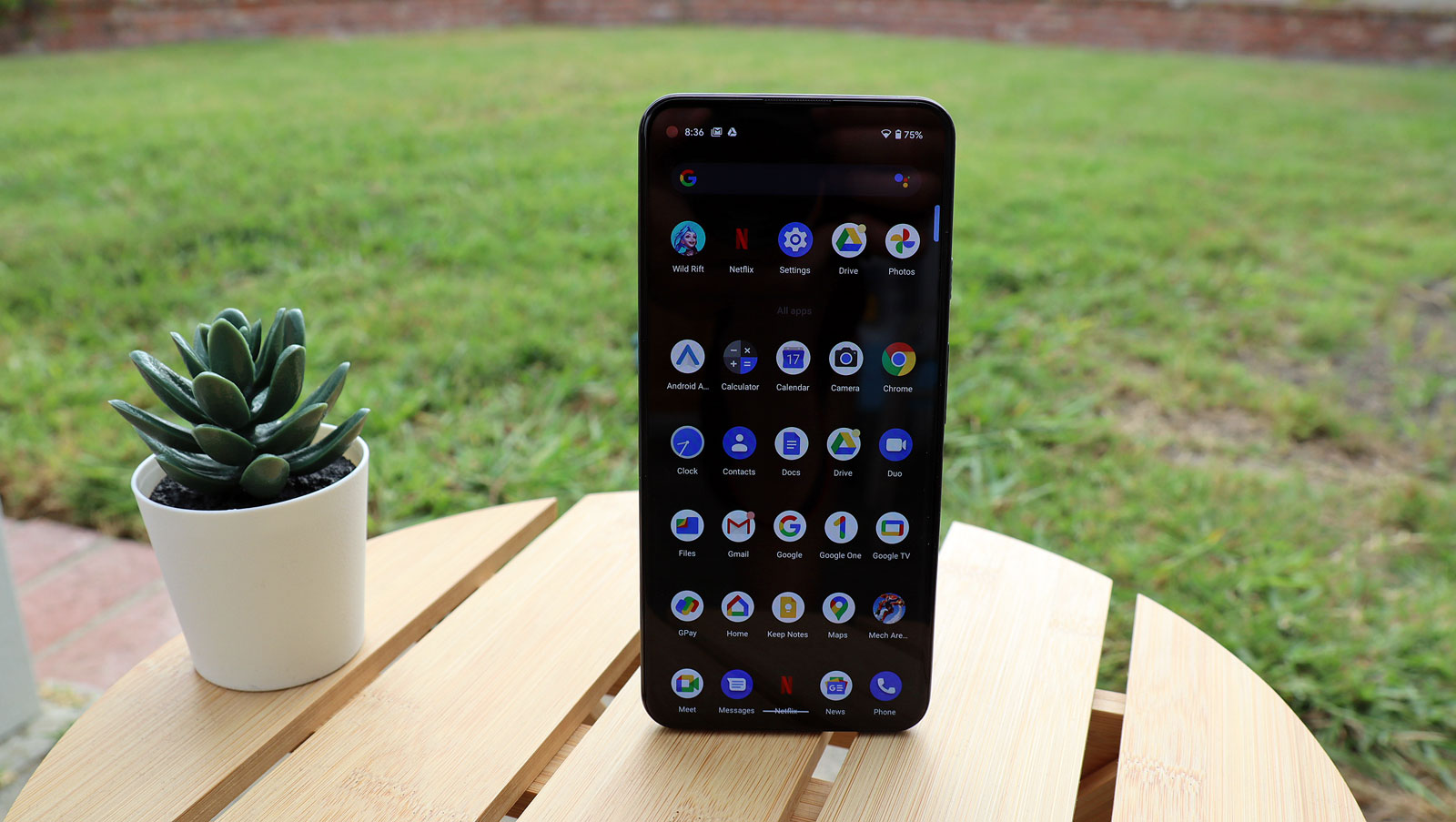
Google announced the Pixel 6a at Google IO 2022 in May, marking the another chapter in the company's affordable smartphone story.
The phone has since been replaced by the Google Pixel 7a, which arrived in May 2023, but last year's model remains a lot more ambitious and inclusive than its predecessor, the Pixel 5a (which was a curiously timid launch that only ever rolled out in a select few countries).
So, how do two of Google’s former budget flagship phones compare to one another in a straight spec face-off? Let’s take a closer look.
Pixel 6a vs Pixel 5a price and availability

Announced at Google IO 2022 on May 11, 2022, the Pixel 6a hit storefronts worldwide on July 28 for $449 / £399 / AU$749.
That was the same launch price as the Pixel 5a, which debuted on August 26, 2021 in the US and Japan. However, it never made its way to the UK or Australia, unlike the Pixel 6a, with Google content for the similar Pixel 4a to continue serving as its affordable option in those regions.
Following the release of the Pixel 7a in May 2023, the Pixel 6a was discounted by Google itself to $349 / £349 / AU$599, so that phone is now a better value proposition than ever before. Obviously, you can now pick up the Pixel 5a for much less than its $449 retail price, too.
Both devices face the problem of having launched much later than their bigger, better brothers (the Pixel 6 and Pixel 5, respectively), which meant they both hit shops just as their superior siblings were receiving healthy discounts.
Get daily insight, inspiration and deals in your inbox
Sign up for breaking news, reviews, opinion, top tech deals, and more.
Pixel 6a vs Pixel 5a design
These two budget phones might have similar prices these days, but their designs are like night and day.
The Pixel 5a sports a fairly generic smartphone design that comes in a single drab Mostly Black shade – albeit one that shows through ‘forest green undertones’ in certain lights. It looks almost identical to the Pixel 4a before it, which was hardly a bold departure from the Pixel 3a before that.
In terms of specifics, it has a matte-textured plastic rear that wraps around the sides, top, and bottom of the phone, punctuated by with a rear-mounted fingerprint sensor and a glossy glass-covered camera.
The Pixel 6a, on the other hand, looks nothing like any other affordable phone on the market, and comes in the three mostly-vibrant colours of Chalk, Charcoal, and Sage.
It takes its design cues from the Pixel 6, with a familiar camera module visor that stretches the width of the phone. You also get the same two-tone finish either side of that camera module, while the fingerprint sensor is now housed underneath the display, like most other modern smartphones.

In terms of size, the Pixel 6a is a tad smaller and lighter (by a mere 5g), but also thicker by 1.3mm than the Pixel 5a.
Both phones have IP67 water and dust resistance rating, which is uncommon at this end of the market. They’re also joined in the use of Corning Gorilla Glass 3 for their display glass.
Pixel 6a vs Pixel 5a display
We’ve just mentioned that the Pixel 6a is a slightly smaller phone than the Pixel 5a, and that’s reflected in the displays. At 6.1-inches, the Pixel 6a screen is a smidgen more compact than its 6.34-inch Pixel 5a equivalent.
Other than that, these two displays appear much the same. Both use vibrant OLED panels, and both sport identical 1080 x 2400 or FHD+ resolutions.
We found the Pixel 5a display to be “bright and vibrant” and “good for watching media and playing games”, and we’re hopeful that the Pixel 6a will follow in the same vein.
The one big disappointment with both phone screens is that neither strays beyond a 60Hz refresh rate. We’ve come to expect 90 or 120Hz from far cheaper phones than these two, so they’re left looking a little regressive in motion.
Pixel 6a vs Pixel 5a cameras
The overwhelming strength of all of Google’s Pixel phones, regardless of price or positioning, has always been their cameras. Every single Pixel phone punches above its weight with crisp, spookily well exposed snaps.
This has never been about hardware tricks, with each phone packing relatively ordinary and even downright archaic components. Rather, it’s always bee a reflection of Google’s unmatched algorithmic mastery.
That extends to the Pixel 5a, and it will more than likely extend to the Pixel 6a too.
The Pixel 5a sports exactly the same camera system as the Pixel 4a: a 12.2MP f/1.7 dual-pixel main camera, with autofocus and both optical and electronic image stabilization, as well as a 16MP f/2.2 ultra-wide camera.

Despite this modest set-up, our reviewer commented on “shots that have stunning clarity and realistic colors”, and on the phone’s ability to “capture decently-lit images without much noise” even in near-dark scenarios.
The Pixel 6a appears to have an identical wide sensor to its predecessor. Together with the phone’s custom processor, it will almost certainly take even better pictures than the 5a.
That aforementioned custom processor also enables unique features in the Pixel 6a, such as Magic Eraser’s ability to remove annoying extras in photos, and Real Tone’s capacity for more accurately capturing non-white skin tones.
The Pixel 6a also packs a slightly different ultra-wide camera this time around. The pixel count has dropped to 12MP, but those individual pixels are a little larger, so they should cope even better in lesser lighting. It also has a narrower 114˚ shooting angle as compared to the 119˚ of the Pixel 5a.
Both phones share the same 8MP front camera. Again, we’d expect the Pixel 6a’s superior image processing capabilities to yield better selfies.
Pixel 6a vs Pixel 5a specs and performance
The real difference between these two phones, aside from their designs, is likely to lie with their performance.
While the Pixel 5a utilises an off-the-shelf mid-range chip from 2020 in the Snapdragon 765G 5G, the Pixel 6a packs in a custom flagship-level Google Tensor from late 2021. Both share chips with their more expensive brothers (the Pixel 5 and Pixel 6 respectively), but Google has really stepped up its ambitions in between generations.
While we called the Pixel 5a’s specs “respectable” in our 2021 review, the Tensor chip of the Pixel 6a is capable of mixing it with today’s flagship titans.

It’s a crucial difference, both for the here-and-now and for the future. Right now, the Pixel 6a will be able to run high-end games and multi-task better, while Google’s customisations enable features like the unique camera functions outlined above.
As for the future, the Pixel 6a will remain feeling fresh and will gain ongoing support for at least the next three years. We’d be hugely surprised if the Pixel 5a still feels zippy by then.
Processor aside, both phones pack in 6GB of RAM and 128GB of internal storage, which is respectable rather than impressive on both counts.
Pixel 6a vs Pixel 5a battery life
The Pixel 5a wins when it comes to raw battery capacity, chipping in with a 4,680 mAh cell while the Pixel 6a makes do with a 4,410 mAh equivalent.
Neither cell is huge for a phone at this end of the market. Remember, though, that neither phone has a high refresh rate display either, and such a component is known to be a power hog in rival phones.
We found that the Pixel 5a was capable of lasting more than a day on a single charge, and we’d expect the Pixel 6a to manage something similar. Yes, it has a slightly smaller cell, but Google’s Tensor chip is built to a more efficient 5nm standard than its predecessor’s 7nm Snapdragon 765.
Both phones can recharge at a maximum rate of 18W. This isn’t massively impressive when direct rivals are offering speeds of 67W and beyond.
Takeaway

From our initial impressions, the Pixel 6a seems to be the product of a much more confident and outward-looking Google. It's actually available outside of the US and Japan, for one thing, which the Pixel 5a infamously isn’t.
The Pixel 6a also reflects Google’s bolder, braver design approach, as we’ve seen recently in the rest of the Pixel 6 range. It benefits from genuine flagship power, too, unlike the aging mid-range hardware of the Pixel 5a.
That should have positive repercussions for the Pixel 6a’s ongoing support. It’s a much more future-proof phone than its predecessor, that’s for sure.
All in all, then, the Pixel 6a is a much smarter bet than the aging Pixel 5a in 2023, especially as the former device is now cheaper than ever following the launch of its successor, the Pixel 7a.